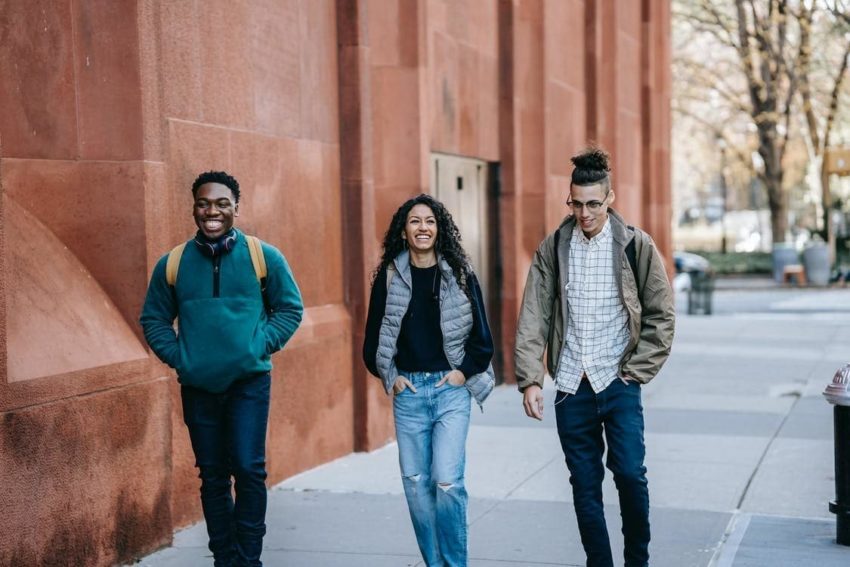The Massive Opportunity Gap in American Universities
Updated: June 19, 2024

Nationwide, there are 17.5 million undergraduate students enrolled in college. While the number of minority students entering college has increased dramatically since the past with more access to higher education, it still is not equally distributed across race and socioeconomic status. Thus, these differences have become known as the opportunity gap.
The opportunity gap leads to questions like: What is one consequence of more people obtaining college degrees? And, why is equality so important in this regard?
We’ll cover all this and more. Let’s dive into why low income students don’t go to college (or are less likely to) and how online institutions are increasing college opportunity for low income students.

What is the Opportunity Gap?
The opportunity gap refers to the factors outside of one’s control which contribute to lower rates of success in education, career prospects, and overall aspirations. These factors include: race, gender, language, family situations, income levels, etc.
For example, children who are born into the top fifth of the income distribution are twice as likely to become middle class or higher in their adult years versus those born into the bottom fifth. This statistic alone showcases how where a child comes from can greatly affect their entire life trajectory.
While America does provide opportunity for all, the playing field to begin with is not always equitable, which has long-term effects. The inequity can be seen when it comes to college enrollment in American universities.
A Look at the Numbers
The National Center for Education Statistics’ High School Longitudinal Study of 2009 tracked over 23,000 students that were 9th graders to see how many enrolled in college by February 2016. The findings showcase the opportunity gap in full-blown effect.
Here are some of the highlights:
- College enrollment is not equally distributed based on socio-economic status (SES). For students in the highest SES quintile, more than 90% enrolled in college as compared to just 56% of those in the lowest SES quintile.
- Economic status affects enrollment greatly, even more so than actual academic ability. The data shows students with the highest scores on math skills assessments enroll at a rate of 18% less than their peers in the highest SES quintile with comparable scores. What’s more is that students in the highest SES quintile who have the lowest test scores enroll in college 73% of the time, compared to 41% of students in the lowest SES quintile with low scores.
- When it comes to selective colleges, white students are more likely to enroll than black or Latinx students. For example, a white student is more than twice as likely than a minority student to attend a selective college. This is important to note because selective colleges tend to feed into high-paying and selective jobs, which further impacts the opportunity gap in life overall beyond graduation.
- The opportunity gap beyond education becomes a cyclic effect because, as we mentioned above, children who are born into higher economic status families are more likely to be middle or upper class later in life.
How to Close the Opportunity Gap
The opportunity gap has always existed, but it doesn’t have to be the reality. There are suggested policies and ideas to help to close the opportunity gap, which work to address the factors that have historically affected one’s ability to have equal access to education.
Some of the policy recommendations include:
- Health issues: Students from all backgrounds should have equal access to healthcare and preventative treatment so that they are able to show up to school ready to learn and in good health.
- Identify needs of minority students: Minority students often live in less safe neighborhoods, face more health issues, have overworked parents, etc. All of the external factors may affect their willingness to learn and/or ability to focus. As such, it’s important to identify the actual needs of minority students to be able to properly gauge their academic strengths and weaknesses to ensure that if they are not performing to standards, it’s not happening because of outside factors.
- Reform funding laws: When public institutions and primary schools are funded by states and federal budgets, it’s necessary to equally distribute the funds across neighborhoods and school districts.
- Create a diverse curriculum: Institutions should use resources from diverse cultural perspectives that represent viewpoints of the diverse student body.
- Reform testing: Tests have become a measure used to enforce state-wide and county-wide standards, rather than what they were initially designed to do, which is to provide teachers with a way to assess a student’s learning and understanding.
Negative Effects of the Higher Education Opportunity Gap
The opportunity gap has lasting effects beyond the walls of academic institutions. When students, especially those in postsecondary education, do not complete their degree, they are less likely to obtain a well-paying job.
With a college degree, there is a higher likelihood of obtaining a job with higher earning potential. The statistics show a gender gap in this case (like the opportunity gap for race/social status, but in regard to gender). Yet still, the earning potential is undoubtedly higher for graduates of any gender that hold a bachelor’s degree than someone without one. To exemplify, men with a bachelor’s degree will earn $655,000 more in median lifetime earnings than those with a high school diploma. For women, that number is $450,000 more.
Higher earning potential tends to translate into maintaining a better quality of life (access to good schools, healthcare, mobility, etc.)

How University of the People Works Towards Closing the Gap
Along with adjusting policies and processes across private and public institutions, there is an increasingly popular approach that is supporting access to education and aiding in closing the opportunity gap, namely online education.
At University of the People, we firmly believe that education is a right, and we work to provide students from all different socioeconomic backgrounds, nationalities, religious affiliations, etc. with access to quality education.
To remain affordable, we operate as a tuition-free, non-profit organization. Plus, we are accredited, which means that students can earn credible degrees or enroll in non-degree-granting certificate programs to help them achieve their life goals.
Equal Education for All
The opportunity gap is prevalent in American universities. The only way to address the issue is to be aware that it exists and be open to promoting solutions that can work to close the opportunity gap in education.
Having access to online universities like University of the People is just one step forward. Education reform must be initiated to overcome the opportunity gap so that America will witness the day when enrollment is unaffected by a student’s socio-economic or racial background.
